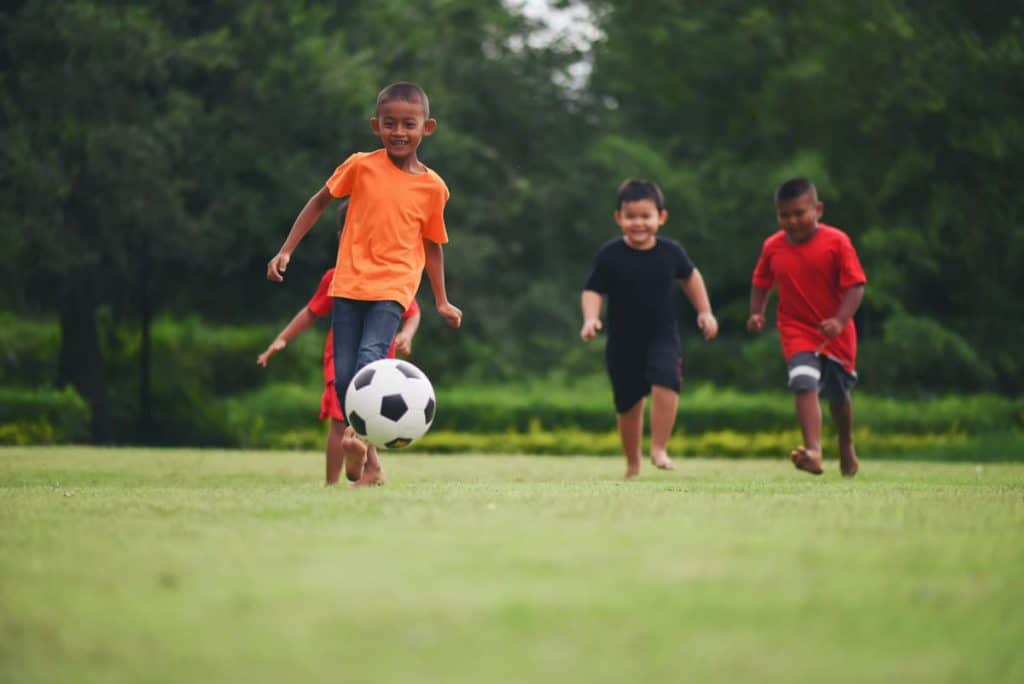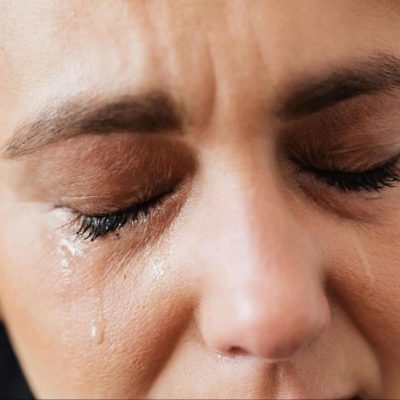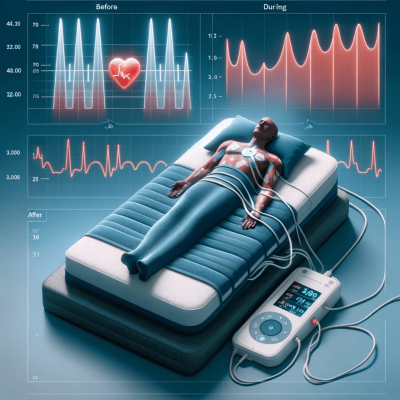In today?s news, we will look into how WHO is improving Ukraine’s response to sexual and gender-based violence (GBV) by enhancing the ability of healthcare professionals and healthcare facilities to deliver survivor-centered treatment. Meanwhile, according to recent ParticipAction research, fewer kids and teenagers engaged in physical activity during the pandemic, but this decline was substantially offset by the increase in COVID-safe outdoor play for many families. Furthermore, at the Sept. 28 White House Conference on Hunger, Nutrition, and Health, panelists emphasized the value of introducing sports to young kids and removing obstacles to access.
Table of Contents
ToggleWHO educates healthcare professionals to offer survivors of gender-based violence in Ukraine quality care
Original Source: WHO trains health workers to provide quality care for gender-based violence survivors in Ukraine
WHO builds the capacity of health care staff and facilities to deliver survivor-centered care in Ukraine.
WHO in Ukraine taught more than 60 doctors, nurses, and health facility managers from Odesa, Dnipropetrovsk, and Kyiv on GBV survivors with financing from the Canadian government and cooperation from the Ministry of Health and civil society organizations.
Based on WHO standards and national legislation on sexual and gender-based violence, the 2-day training allowed health care providers to detect indications of violence, give appropriate clinical care and psychosocial support, and refer to social and legal support services.
“The health sector plays a vital role in responding to gender-based violence, including physical, sexual, and emotional violence,” said WHO Representative in Ukraine Dr. Jarno Habicht.
?Since the Russian Federation’s invasion of Ukraine in February, women and other population groups are increasingly exposed to sexual and gender-based violence,? he continued. WHO is dedicated to helping Ukraine address gender-based violence as a public health issue and ensure survivors receive high-quality care.
Some people’s only support is their doctor.
GBV is a human rights violation with health effects. 2/3 of Ukrainian women have encountered psychological, physical, or sexual assault in their lifetime, and 18% have experienced intimate relationship abuse. Sexual and gender-based violence, particularly conflict-related sexual assault, have grown since Russia invaded Ukraine. Most cases go unreported.
“More than 90% of women who have experienced violence do not inform the police,” said Yefimenko Olena Volodymyrivna, Director of the Kyiv Oblast Health Department. If violence causes medical concerns, they’ll seek care. Doctors must be able to recognize indicators of violence and respond quickly. Such trainings are needed to develop a comprehensive system of survivor assistance in all hospitals.
Ukraine joined the Istanbul Convention in June 2022, which sets basic requirements for preventing, protecting, and prosecuting violence against women including domestic abuse. The Ukrainian government, with WHO’s cooperation, is improving health sector responsiveness and care for violence survivors.
“As family doctors, we must recognize that working with gender-based violence survivors is our job,” said Svitlana Vedmid, a family doctor and medical director in the Dnipro region and training participant. Family doctors are generally the first to contact for persons experiencing violence or needing mental health treatment. For some, their doctor may be their sole support.
Tetyana Volkovich, a family doctor in Pavlograd, Dnipropetrovsk, is motivated by empathy. “A doctor should be human. This training gave us more skills and information. Previously, we reported violence cases to management, but now we have a plan for acting independently and know the numbers of mobile teams and shelters in our city.
WHO continues to strengthen Ukraine’s health sector response to sexual and gender-based violence to ensure life-saving care for women, girls, and other at-risk groups, including persons living with disabilities, the LGBTQI+ community, and displaced persons. As part of ongoing humanitarian response operations, WHO plans to expand up health care professional trainings in 8 regions.
Pandemic lowered kids’ physical activity, but outside play helped
Original source: Kids’ physical activity dropped during pandemic, but researchers encouraged by more outdoor play
A new study quantifies what many parents already know: kids’ exercise levels plummeted during the pandemic, but screen time rose.
ParticipAction’s current physical activity report card awards kids a “D,” down from a “D-plus” in 2020.
The “F” in sedentary screen time is “a significant decline” from the “D-plus” in 2020.
The 15th edition is based on data obtained during the COVID-19 pandemic, which halted many kids’ play dates, sports, and exercise programs.
The ParticipAction report card assigned kids and teens an overall “F” score for physical activity, screen use, and sleep.
Dr. Leigh Vanderloo, ParticipAction’s scientific director, blames infection control efforts for the backslide.
She also notes to promising indicators that many families developed a new fervor for outdoor activities during the epidemic, suggesting that grades could climb again if outdoor excitement remains when sports and PE classes return.
Vanderloo said the statistics will be considered as a “blip” compared to past and future report cards.
“Outdoor time was revitalized. We saw it with camping registrations and park use ? some were off the charts, they’ve never seen so much demand “saying, “There weren’t many possibilities, but hopefully that continues.”
The public’s embrace of parks, trails, and other outdoor areas for family enjoyment and exercise kept household support for physical activity at a C, while active transportation and play improved from F to C?.
Vanderloo noted that school lockdowns forced pupils onto laptops and computers to finish their studies, while physical-distance limits drove up social media and screen-based amusement instead of face-to-face friend time.
Add in TikTok and new social media stars, and it’s likely that parents have increased screen time, too, said Vanderloo.
She calls harm-reduction initiatives a “finger-wagging strategy” that emphasizes screen use’s negative impacts.
“I don’t think that’s beneficial,” Vanderloo remarked.
She suggested involving the whole family in assessing screen use and finding alternatives to sedentary time.
“We know children and families will use screens to entertain, interact, and learn,” she said.
“How can we use screens properly and healthily? It’s discussing? Co-viewing? Is it designating screen-free zones, like dinnertime and the bedroom?”
Unequal active opportunities
Examining social determinants of health, such as poverty, education, and geography, is also crucial, Vanderloo said.
The report card investigated girls’, immigrants’, Indigenous peoples’, LGBTQ and racialized youth’s wellness for the first time, acknowledging that the pandemic worsened health inequality.
Increases in outdoor time were more prevalent in higher-income families, whereas car-free streets were more common in regions with fewer visible minorities and fewer children.
Dr. Anna Banerji, a pediatrician at Toronto’s Dalla Lana School of Public Health, says coloured kids and newcomers to Canada generally live in congested, poor neighborhoods.
“It’s hard to create space with more people,” Banerji told CBC News.
Traveling to another section of the city with wide spaces for physical recreation is also challenging, she noted.
The report card is a combination of studies and national-level surveys, but data on marginalized groups is scarce, the study found.
“How can we support and identify their needs without a baseline?” asked Vanderloo. “We must know if we’re to move the needle. How little we knew surprised me.”
Before the epidemic, marginalized kids faced challenges to physical activity and recreation, such the cost of sports equipment, said Banerji.
She added cities need programs that remove fees and lend out sports equipment and public spaces where kids and youth can play.
Encouragement of physical activity begins with young people
Original source: Supporting Physical Activity Starts at Youth
Experts at the Sept. 28 White House Conference on Hunger, Nutrition, and Health said physical activity for all people must be a priority to reach President Biden’s health and nutrition goals.
Two workshops were organized to examine difficulties and answers to the fourth pillar of the National Strategy, “promote physical exercise for all.”
Tom Farrey, founder and executive director of the Aspen Institute Sports and Society Program, moderated the first session. The panel emphasized boosting physical exercise and removing impediments.
Transportation and cost are impediments for children seeking programs, said Rise Above founder Jaci McCormack. I think meeting kids where they are is our top priority.
Panelists recognized transportation as a big difficulty, but there are options to help youngsters get to parks and public areas. Al Bangoura, Minneapolis’ park superintendent, outlined the city’s bike program.
You may learn to ride and borrow bikes through his program. “We taught them how to ride properly, and they rode to the park every day.”
Lysa Ratliff, president and CEO of KABOOM!, a national non-profit fighting to abolish playspace injustice, moderated the second session, “The Power of Play: Supporting Physical Activity for Kids.” This panel covered making physical activity interesting and engaging for young children.
One in four U.S. students don’t fulfill the physical exercise standards of 60 minutes each day, says GENYOUth CEO Ann Marie Krautheim. By age 9, girls quit sports, and by their teens, the fall is significant.
Krautheim said excellent role models and more collaboration than competitiveness will motivate kids to be active. She encouraged letting kids drive their own ideas.
The panel explored making sports collaborative and making time for physical activity during the day.
Catherine Grano, school nurse at Middletown Township Public Schools in New Jersey, remarked, “Our school days are jampacked with academic learning and trying to reach accomplishment requirements.” “We must integrate physical activity in the school day.”
Physical activity and good nutrition go hand-in-hand, and this is vital for teaching children appropriate eating habits. Keeping youngsters moving will ensure they prioritize nutrition as adults.
Summary of today?s physical health news
All in all, more than 60 medical professionals from the Odesa, Dnipropetrovsk, and Kyiv areas were taught by WHO in Ukraine how to provide services for GBV survivors with financing from the Canadian government and assistance from the Ministry of Health and civil society organizations. As part of ongoing humanitarian response operations, WHO proposes to increase training for healthcare providers in 8 regions in collaboration with the Ministry of Health and partners from the civil society.
Additionally, according to recent ParticipAction research, the pandemic caused a decline in children’s and adolescents’ physical activity, but the decline was substantially offset by an increase in COVID-safe outdoor play for many families. For marginalized children, however, there were less possibilities to participate in the pandemic. To help with that, programs that reduce fees and lend out sporting equipment are needed, as well as making sure that communities have open spaces where children and youth may play.
Finally, experts at the Sept. 28 White House Conference on Hunger, Nutrition, and Health said physical activity for all people must be a priority to reach President Biden’s health and nutrition goals. Physical activity and good nutrition go hand-in-hand, and this is vital for teaching children appropriate eating habits. Keeping youngsters moving will ensure they prioritize nutrition as adults.








